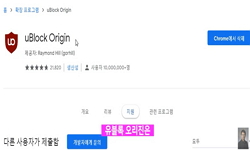1. Objectives: The purpose of this study is to understand the origin, changes and the constructive principles of Hyangsayangyitang (XiangShaYangWeiTang). 2. Methods: Hyangsayangyi-tang and other related prescriptions were analyzed in terms of patholog...
http://chineseinput.net/에서 pinyin(병음)방식으로 중국어를 변환할 수 있습니다.
변환된 중국어를 복사하여 사용하시면 됩니다.
- 中文 을 입력하시려면 zhongwen을 입력하시고 space를누르시면됩니다.
- 北京 을 입력하시려면 beijing을 입력하시고 space를 누르시면 됩니다.

향사양위탕(香砂養胃湯)의 기원(基源), 변천과정(變遷過程) 및 구성원리(構成原理) = The Origin, Changes and Compositive Principles of Hyangsayangyi-tang
한글로보기https://www.riss.kr/link?id=A101482673
-
저자
강미정 (경희대학교) ; 이준희 (경희대학교) ; 고병희 (경희대학교) ; 이의주 (경희대학교) ; Kang, Mi-Jeong ; Lee, Jun-Hee ; Koh, Byung-Hee ; Lee, Eui-Ju
- 발행기관
- 학술지명
- 권호사항
-
발행연도
2010
-
작성언어
Korean
- 주제어
-
등재정보
KCI등재
-
자료형태
학술저널
-
수록면
43-50(8쪽)
- 제공처
-
0
상세조회 -
0
다운로드
부가정보
다국어 초록 (Multilingual Abstract)
1. Objectives: The purpose of this study is to understand the origin, changes and the constructive principles of Hyangsayangyitang (XiangShaYangWeiTang). 2. Methods: Hyangsayangyi-tang and other related prescriptions were analyzed in terms of pathology, based on "Donguibogam(東醫寶鑑)", "Donguisusebowon Chobongwon(東醫壽世保元 草本卷)", "Donguisusebowon Gabobon(東醫壽世保元 甲午本)", "Donguisusebowon Sinchukbon(東醫壽世保元 辛丑本)". 3. Results and Conclusions: (1) The origin of Hyangsayangyi-tang is Hyangsayukgunja-tang from "Gongshin Uigamseo(龔信 醫鑑書"). Hyangsayangyi-tang inherited some of the principles from"Euihangangmok(醫學綱目)" Jeonssiyigong-san's (全氏異功散) application. (2) "Gabobon(甲午本)"'s prescription emphasizes the effect of lossen up by using Pogostemonis Herba(藿香). "Sinchukbon(辛丑本)"'s prescription emphasizes the effect of warm up stomach by using Zingiberis Rhizoma(乾薑). (3) Ginseng Radix(人蔘), Atractlodis Rhizoma White(白朮), Glycyrrhizae Radix(甘草), Paeoniae Radix Alba(白芍藥) support Soeumin's spleen root (脾元), and Zingiberis Rhizoma(乾薑), Myristicae Semen(肉豆蔲) warm up stomach, and Pinelliae Rhizoma(半夏), Citri Pericarpium(陳皮) circulate Qi, Crataegi Fructus(山楂), Amomi Fructus(砂仁), Cyperi Rhizoma(香附子) encourage digestion to maintain descending Yin.
동일학술지(권/호) 다른 논문
-
"동의수세보원(東醫壽世保元)" 신정방(新定方)을 중심으로 한 "동의사상신편(東醫四象新編)"에 대한 연구
- 사상체질의학회
- 이승윤
- 2010
- KCI등재
-
사상체질의학적 병리관에 의한 "상한론(傷寒論)" 태양병(太陽病)의 재해석
- 사상체질의학회
- 이지원
- 2010
- KCI등재
-
소음인(少陰人) 태음병(太陰病) 심하비증(心下痞證)의 병증약리(病證藥理) 고찰
- 사상체질의학회
- 서영광
- 2010
- KCI등재
-
- 사상체질의학회
- 노환옥
- 2010
- KCI등재




 ScienceON
ScienceON






